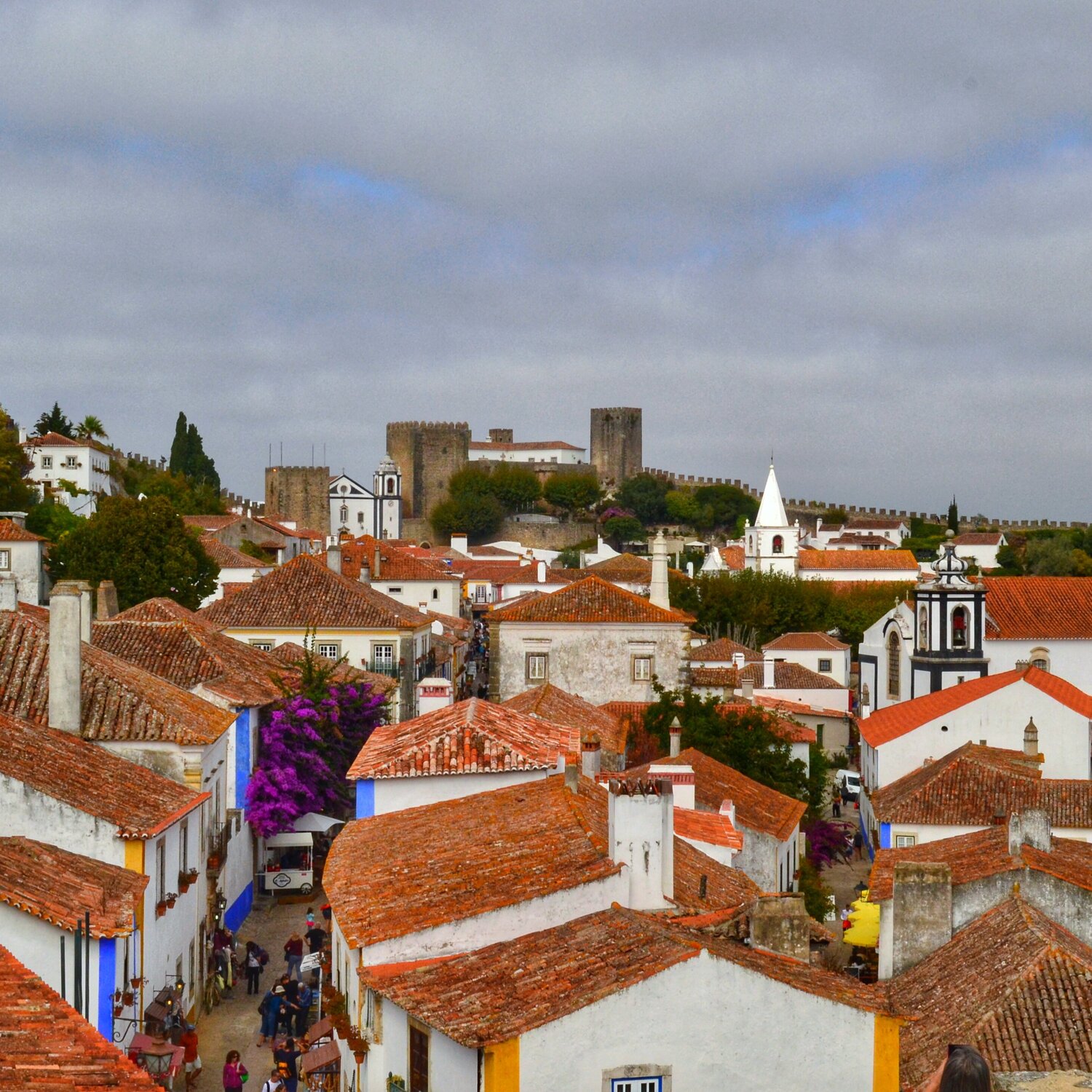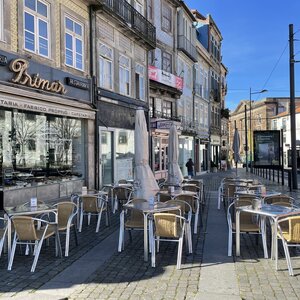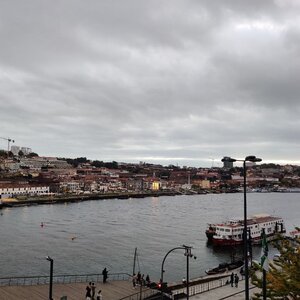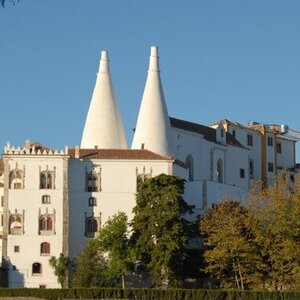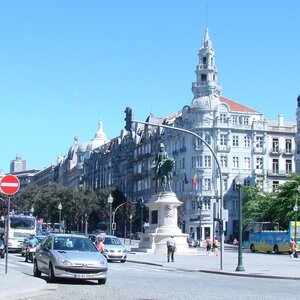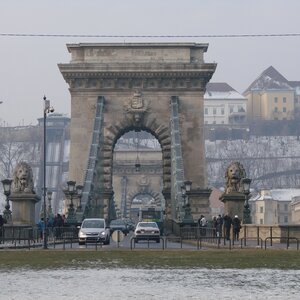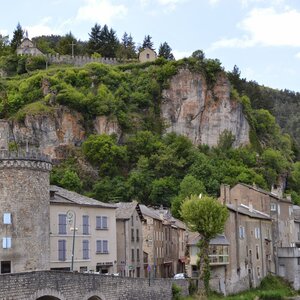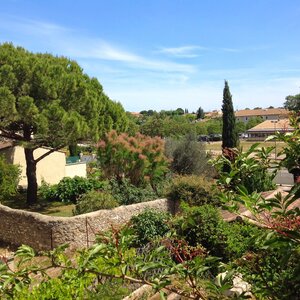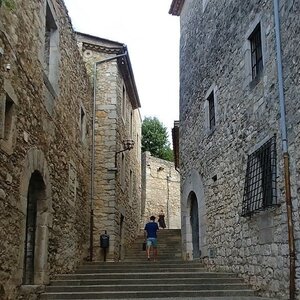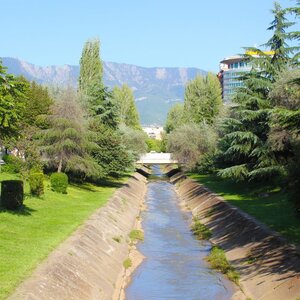In the 13th century, King Denis I gave the fortress town to his future wife Isabella of Aragon on their wedding day. Queen Isabella is a well-known figure in the history of Portugal. For all that she did for religion, church, politics and the common people, she was made a saint. She founded hospitals, orphanages and schools, and helped the poor.
Thanks to the royal couple, Obidos flourished until the 19th century, and became a gift town: there was a tradition of giving it as a wedding gift to young queens. Thanks to the royal weddings, the settlement became a «wedding town», and still today young couples have their wedding photo shoots and honeymoons here. The locals are proud of the town’s customs, and the government supports the national characteristics.
The fortress was once a trading port, and the sea raged near the castle walls. The waters have receded, but the settlement remains.
What to see in Obidusz in one day
One day is enough to get acquainted with the atmosphere and sights of the city. At first, the city seems puppet-like and theatrical, but gradually you realize that people live in these white houses with red tiles, just as they did thousands of years ago.
I’ll tell you about the interesting places in the city.
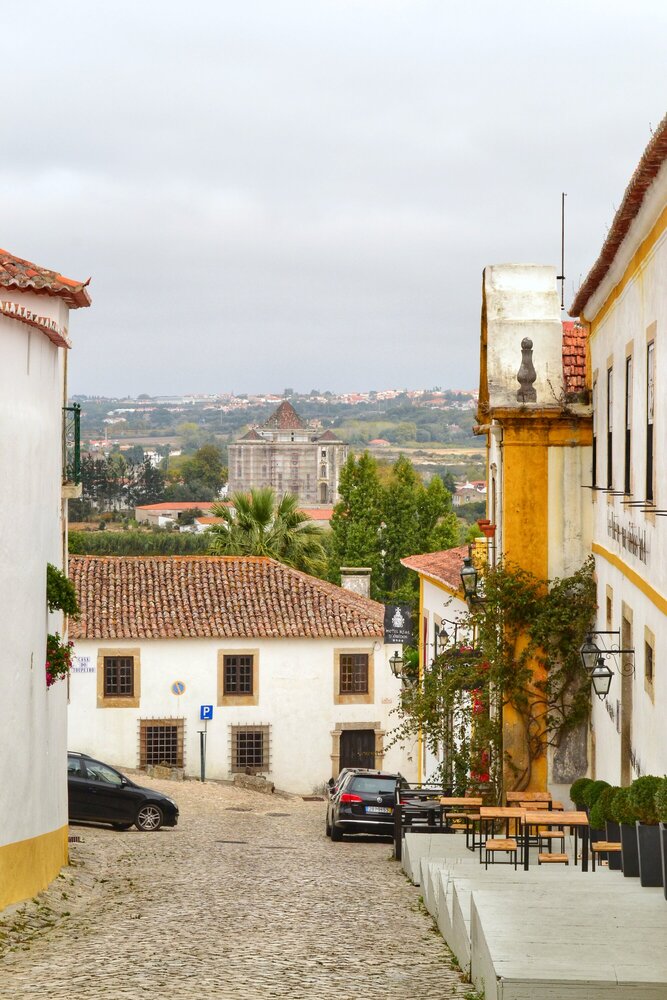
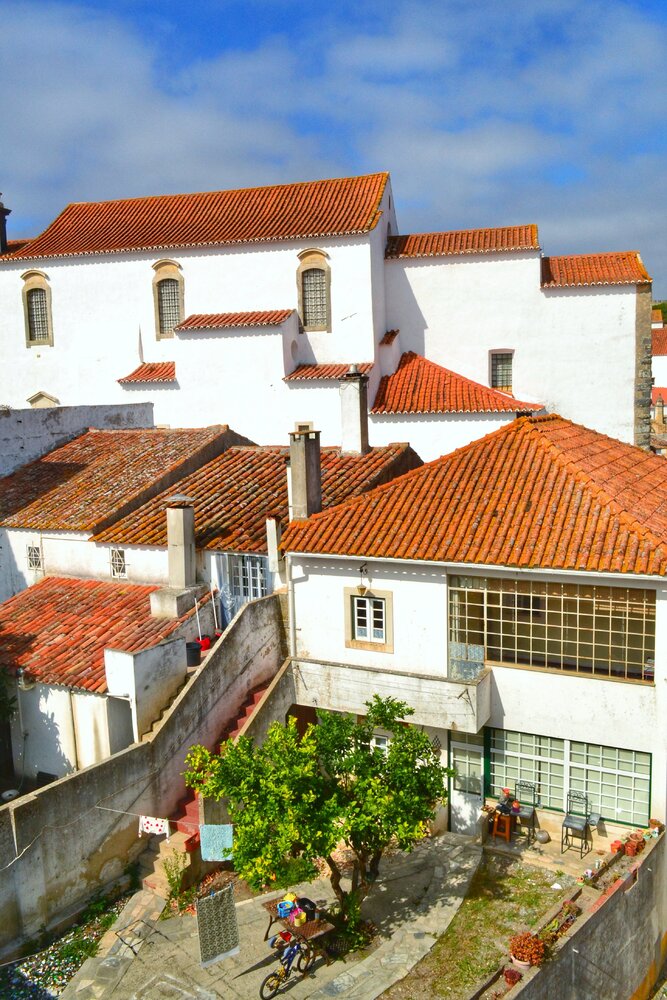
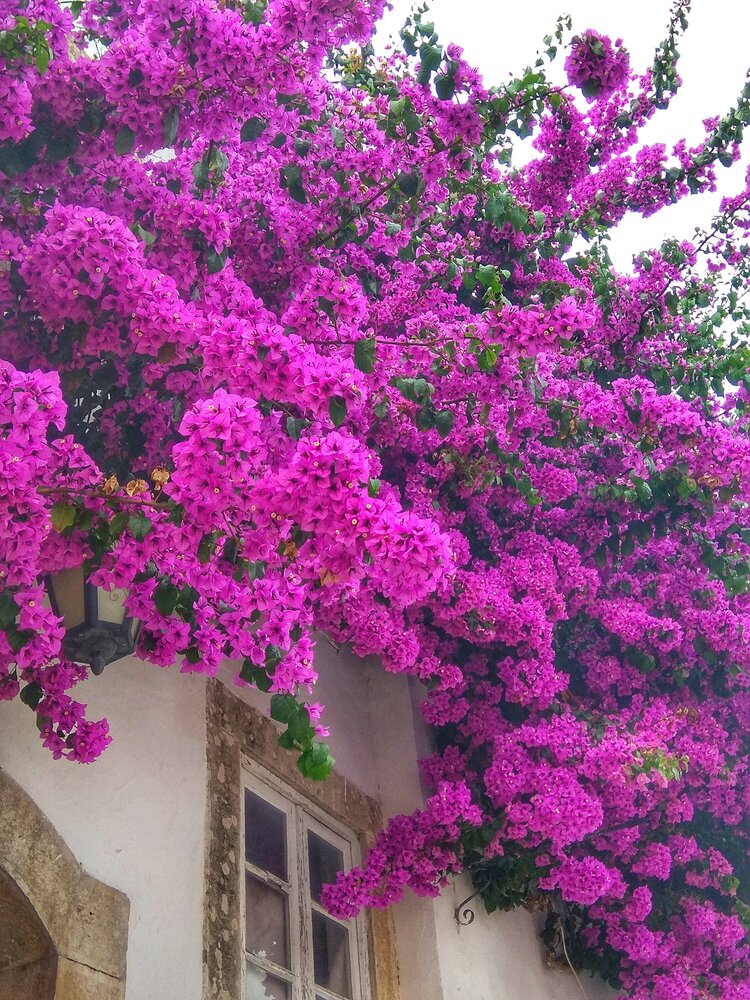
Castle of Obidos (Castelo de Obidos)
A majestic square-shaped building built in the 12th century in the Manuelino style. It acquired its usual appearance in the XV century. In the past members of the royal family held balls there, now the building houses the 4-star hotel Pousada de Obidos with rooms from 150 € per night.
Entrance to the castle is free, but only hotel guests can see the interior of the rooms. The castle complex is included in the list of the main wonders of the country and has the status of a national monument of history and culture. At night the palace and castle walls are illuminated by spotlights. The city is visible even from the highway.
If you want to immerse yourself in the color, see the sunset and the night lights of the fortress, then stay overnight in the castle. Or in another hotel in Obidos nearby.
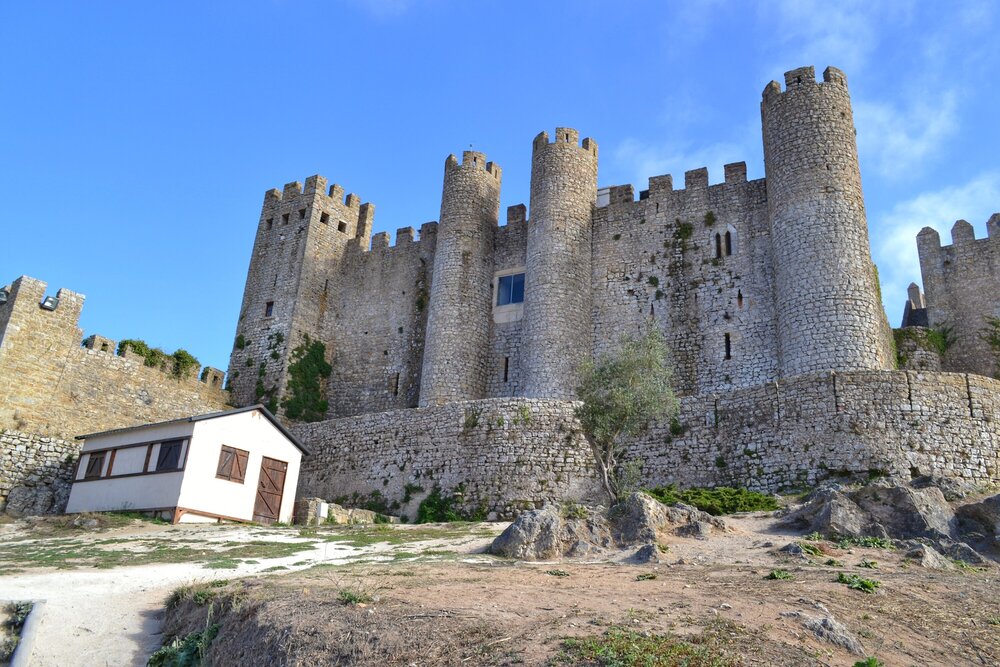
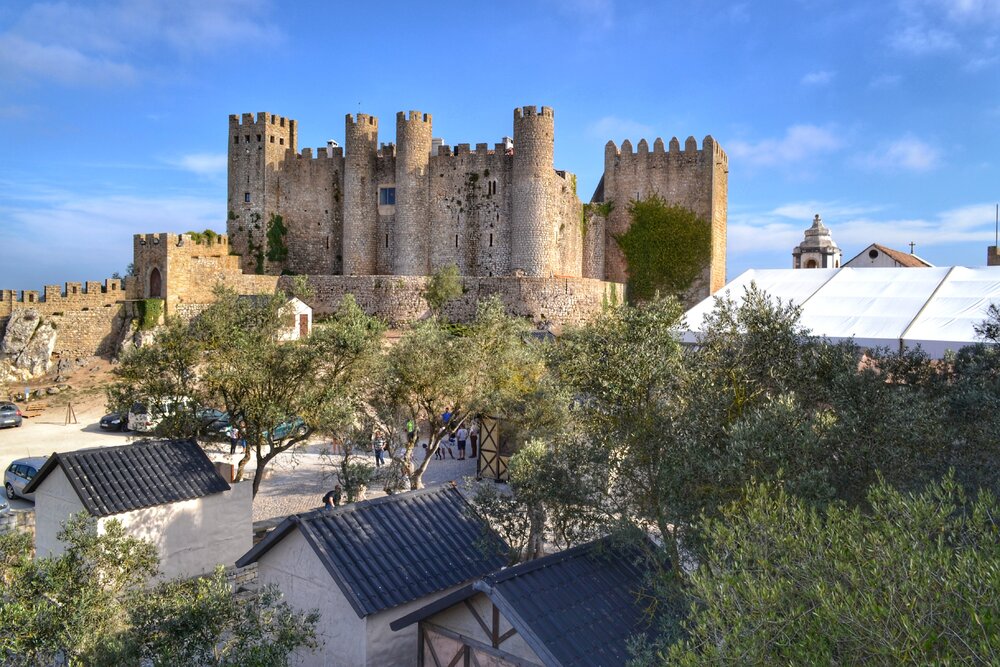
Portas da Vila Gate (Portas da Vila)
There are six stone gates leading into the town, the main and most picturesque being the traditional Portas da Vila gate. Just behind them is a colorful balcony decorated with azulejo ceramic tiles. The city authorities used to welcome honored guests on the balcony, and now it’s a favorite spot for tourists to take photos. I was doubly lucky: near the colorful balcony, a musician played national melodies, which added to the magic of the place.
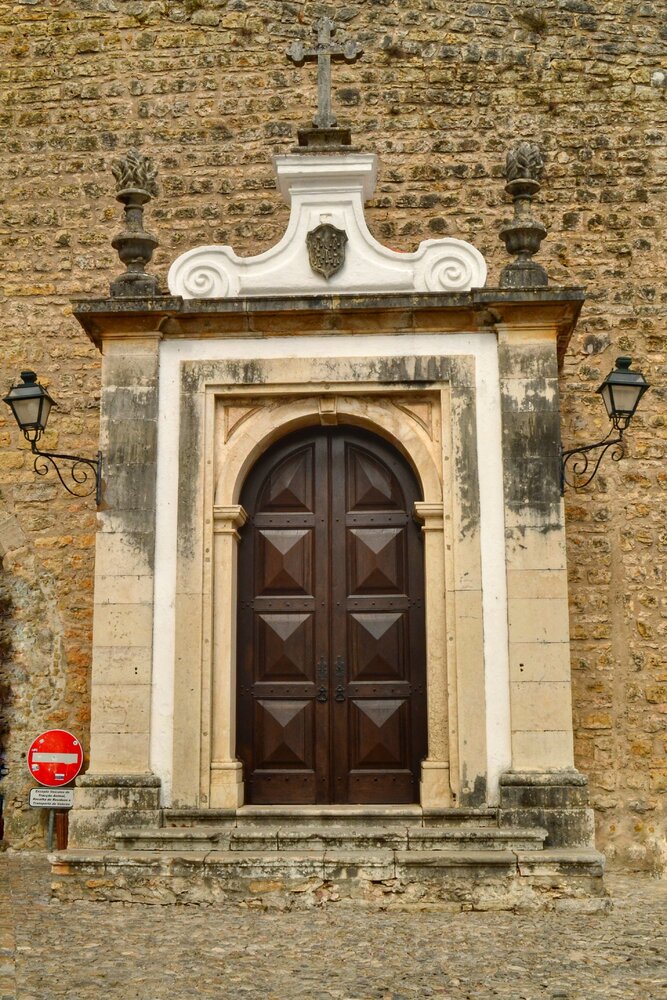
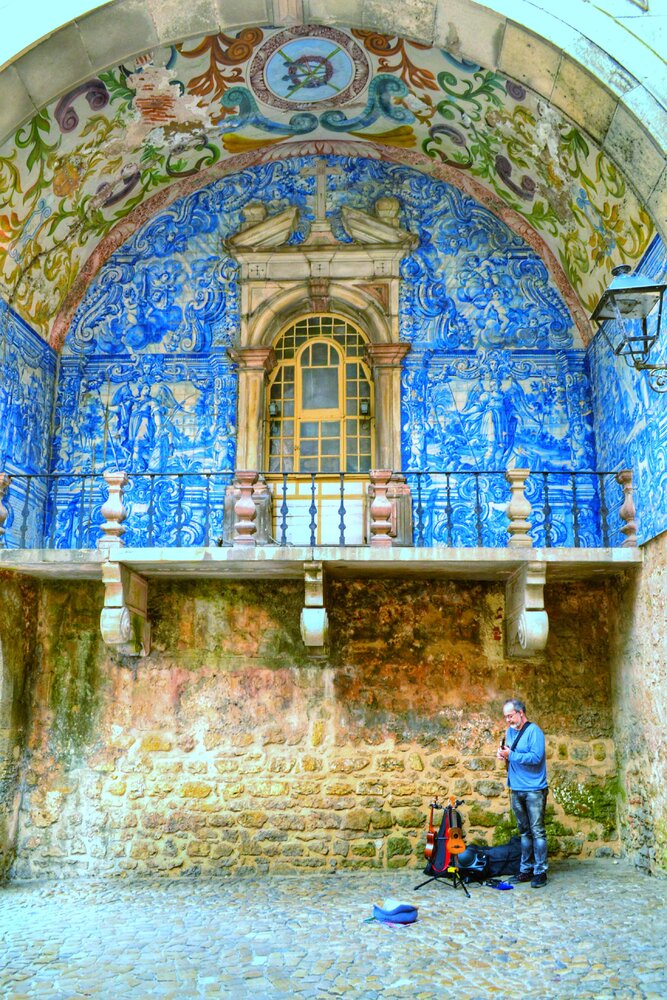
At the entrance behind the gate there is a staircase that leads up to the tower. From this point there is a beautiful panorama, from here you start walking around the city on the fortress walls. Be careful because the passages are narrow and fences are often missing. Entrance to the ramparts is free of charge.
Colorful streets, courtyards, the distant surroundings of grape fields, the life of the locals can be seen from the walls as if in the palm of your hand. I advise you to walk a full circle around the walls and then go for a stroll through the streets of the town.
We walked along the walls for a couple of hours with stops for photos. We spent the rest of the daylight hours exploring the streets, visiting souvenir shops, and relaxing in cafes.
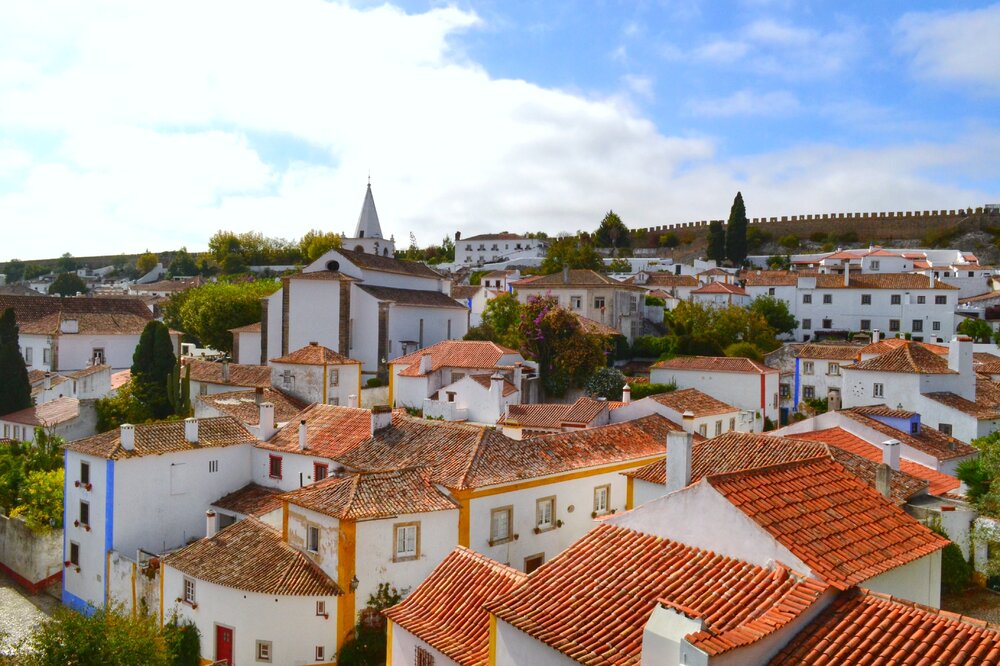
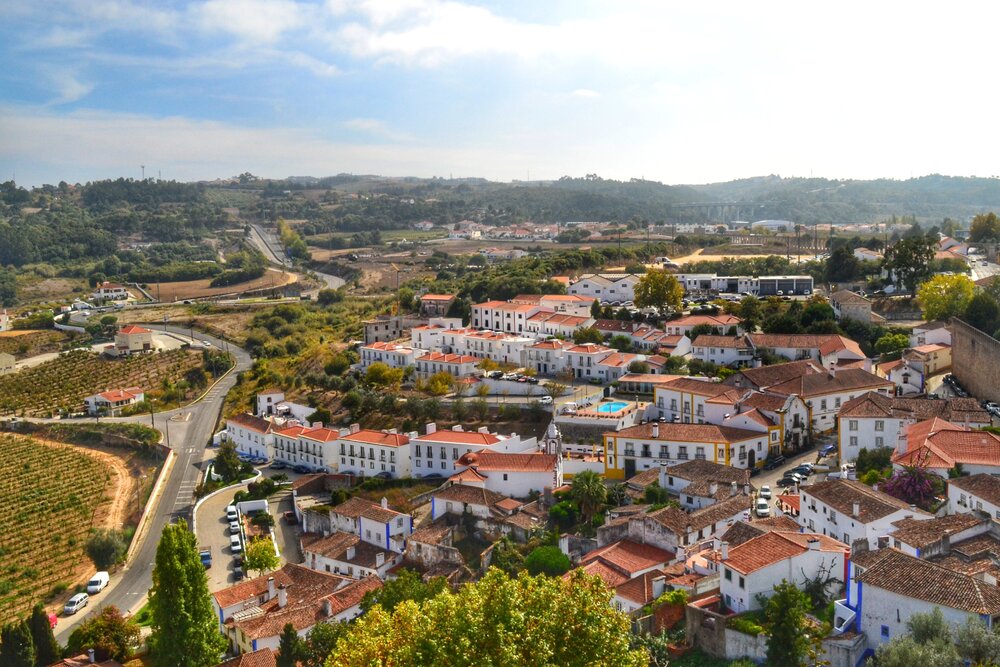
Central Street (Rua Direita)
The main street starts from the Porta da Villa gate and runs through the whole town. It is full of souvenir shops and restaurants. Exquisite balconies, wooden shutters, and colorful decor create a fairy-tale look to the area. It is a real open-air museum. During the day in good weather, there is an endless stream of tourists on the streets.
Each house in the Middle Ages had a name, some have survived and make visitors smile: «house of goose feathers», «house of fifty cockroaches», «house of echoes».
I advise you to try the national alcoholic drink — Jinja. It is a liqueur served in chocolate shot glasses with cherry berries. The drink is drunk and snacked with a shot glass. It is sold in cafes in portions and in souvenir sets.
For lunch at the restaurant, try the national dish of rice with different types of fish and shrimp, caldeirada.
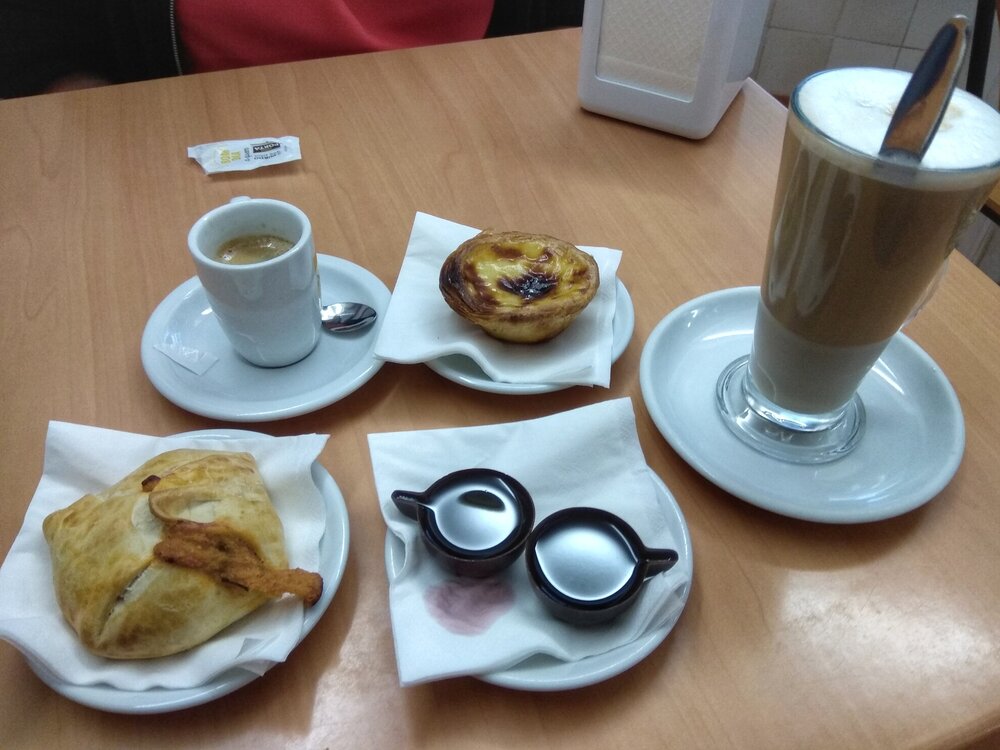
Authentic local souvenirs and handicrafts made by Obidos artisans can be found on the stalls of souvenir shops. Pottery, often in the shape of a cabbage leaf, stands out. Portugal and ceramics are almost synonymous: the country is famous for its variety of ceramics. The factory for the production of colorful tableware is located in Caldas da Rainha, a town near Obidos. This is why prices are lower than in the capital.
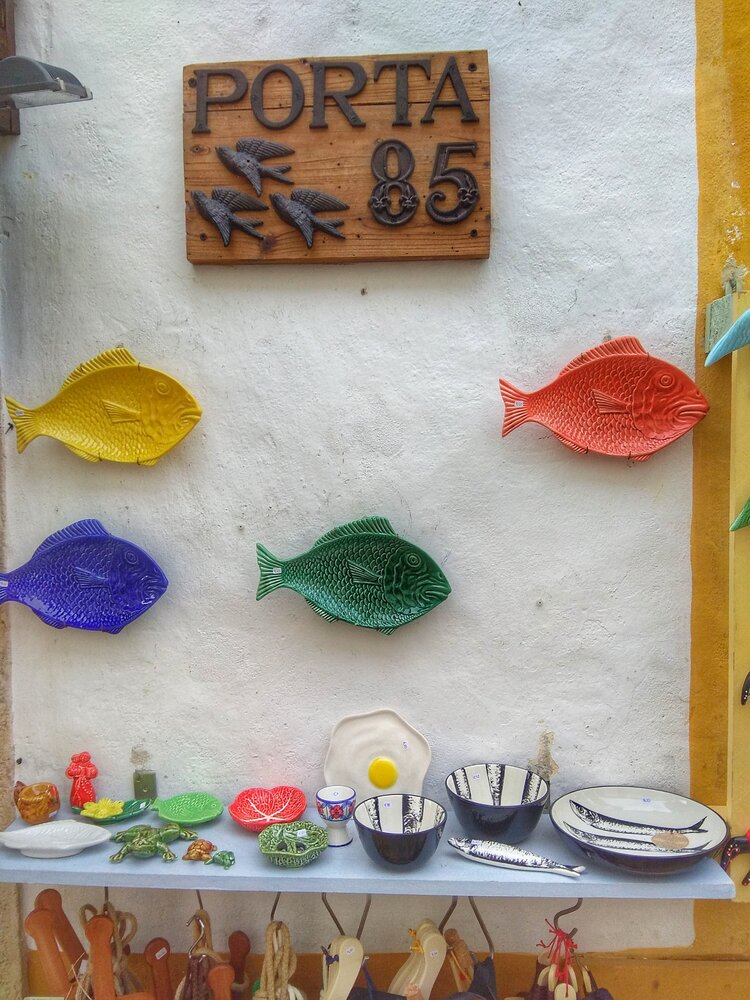
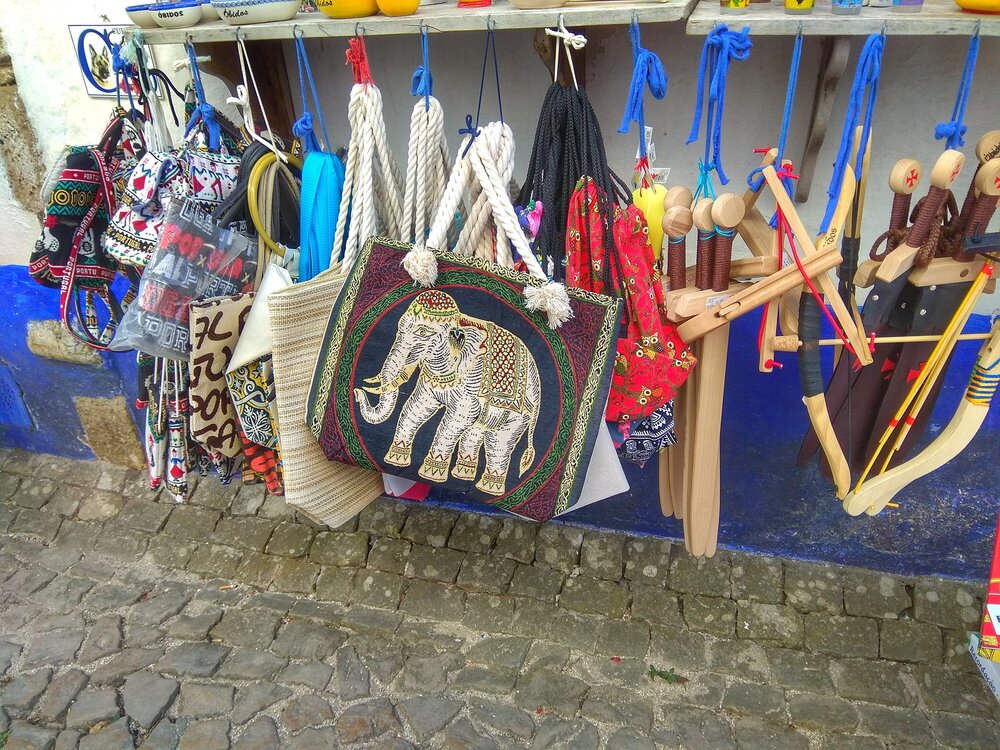



St. Peter’s Cathedral (Igreja de Sao Pedro)
The Cathedral of Obidos was built in the 13th century, and the building was rebuilt in the 16th century after an earthquake. The temple houses a gilded carved wood altar and the tomb of the Portuguese Baroque artist Josepha Ayalé, known as Josepha Obidos. In the country’s famous churches and monasteries, there are paintings on biblical themes painted by Josepha’s hand.
Church of the Blessed Virgin Mary (Igreja de Santa Maria)
The elegant Shrine of Santa Maria is located on the main street. The snow-white bell tower, the Renaissance portal, the altar and the tomb are decorated with carvings. The walls are decorated with paintings and azuleju ceramics. The composition of the altar of St. Catherine was created by the same Josefa Obidos.
According to legend, the temple was built on the site of a Visigothic church. In the XV century, the temple hosted the wedding of the 10-year-old future king Afonso V and his 8-year-old cousin.
In the square in front of the church, as in many old European towns, there is a pillar of shame. In the past, thieves and robbers were tied to it. The image of the royal coat of arms and a fishing net symbolize the sad event when the fishermen brought in the net the son of Queen Leonora, who had fallen from his horse.
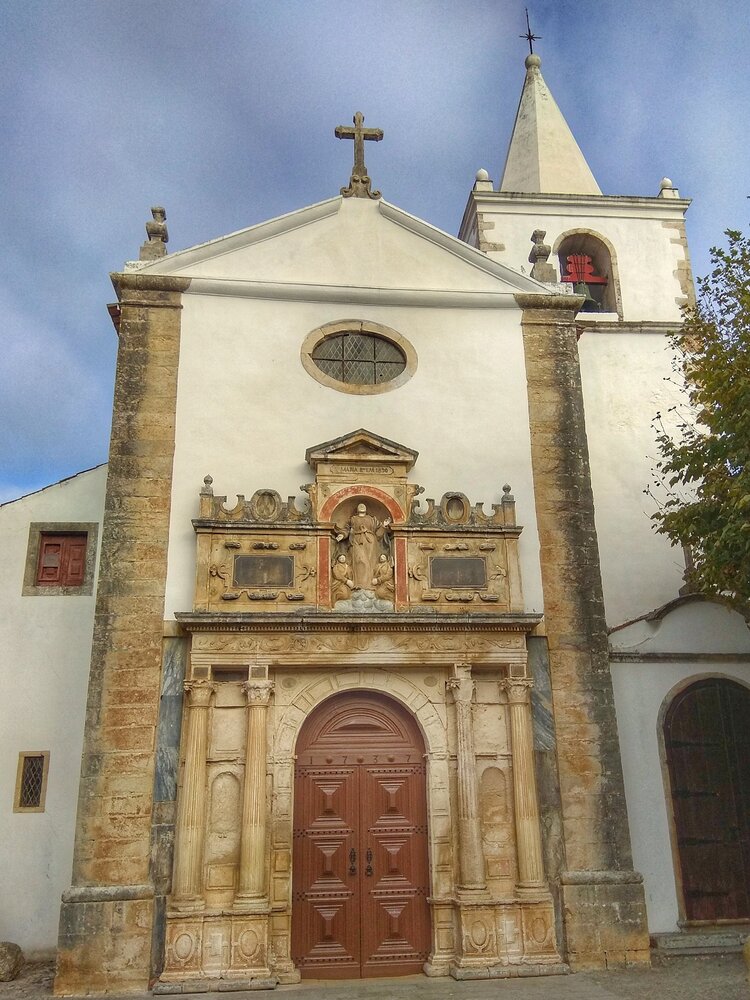
Church of St. James (Igreja de Santiago)
Another shrine is located at the end of the main street, the Church of St. James. There is an authentic bookstore in the church. Here we were told by a strict employee that photography was not allowed, although we did not see any signs prohibiting it.
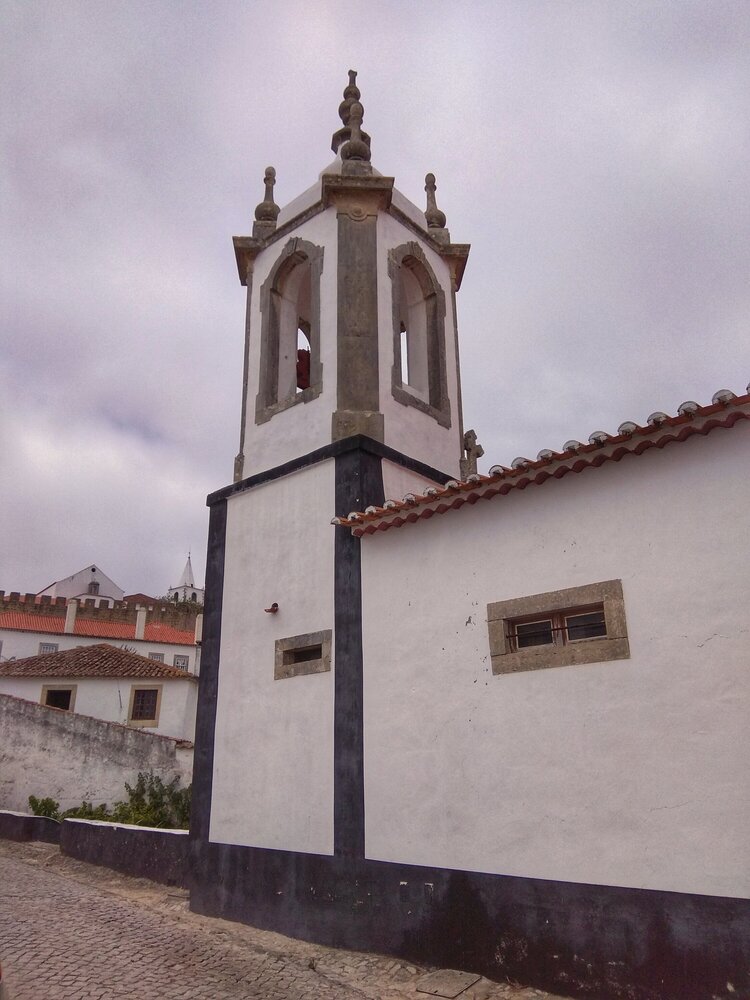
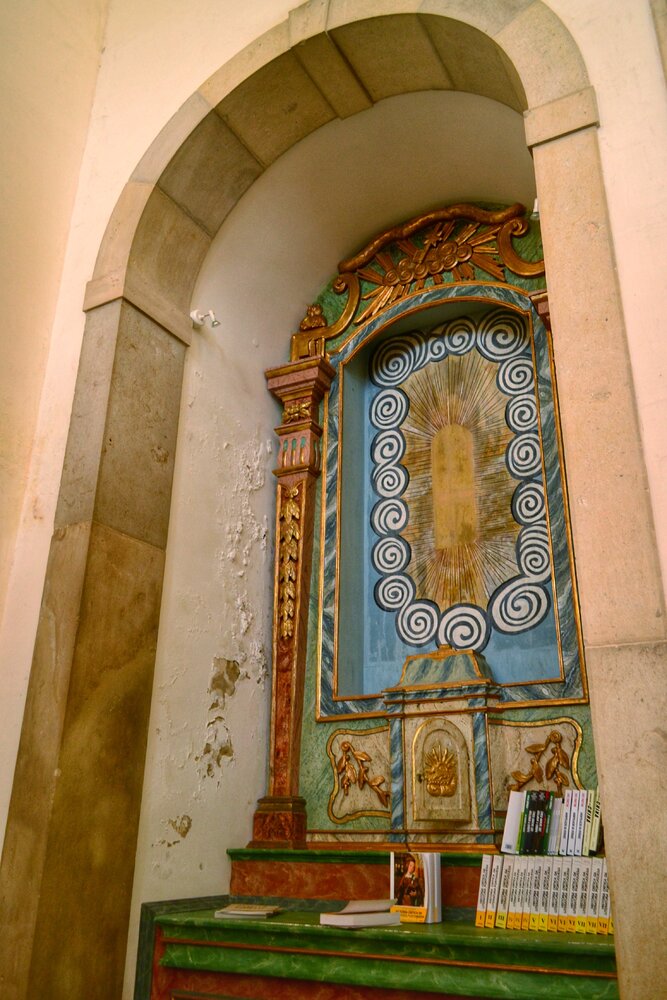

Temple of Jesus on the Stone (Santuario de Senhor Jessus da Pedra)
In the vicinity of Obidos there is a temple of Jesus on the stone, to which pilgrims come every year on May 3 for the feast of worship. The altar houses an ancient relic, a stone crucifix, which is believed to have miraculous powers.
In 2020 the temple is closed for reconstruction, but through the scaffolding you can try to see the building of unusual hexagonal shape. A baroque fountain has been preserved nearby.
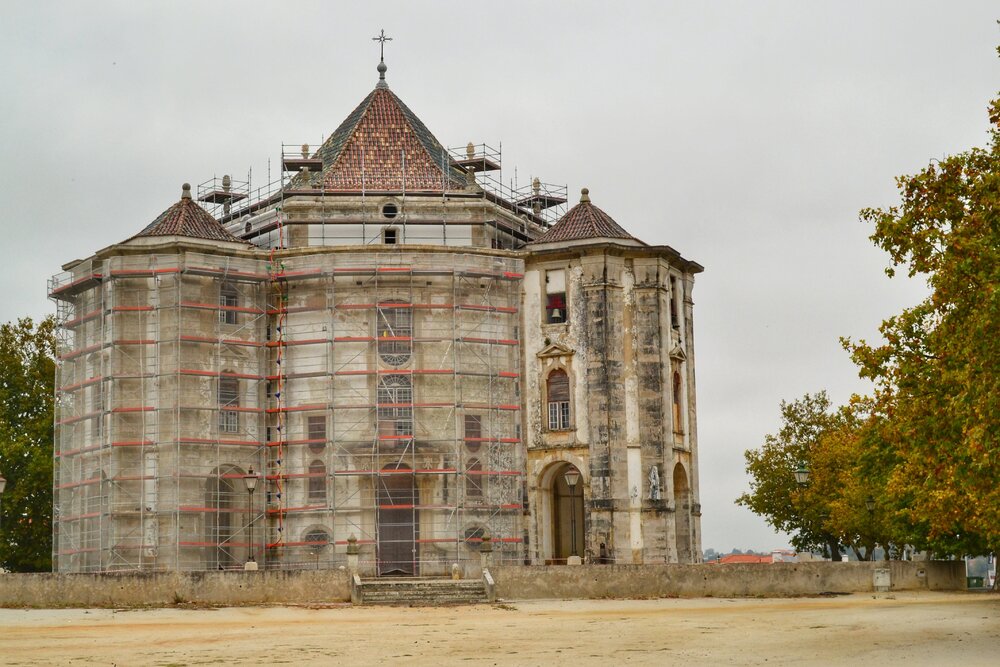
Aqueduct (Aqueduto de Óbidos)
There are no fresh water reservoirs in the city, so water was extracted from wells. The ancient aqueduct was built in the XVI century. Its length is about 3 km.

When to go to Obidos?
The best time to travel to Portugal is from May to October. In spring and summer, the country has the greatest number of sunny days and interesting events: medieval fair, chocolate festival, music week. Antique decorations and the cheerfulness of the Portuguese create ideal conditions for carnivals and street festivities.
In my experience, the weather in the other months is also favorable for excursions, walks, historical sightseeing. All year round, you can take a break from the harsh winter and take part in national festivals. And locals love to come to Obidos during Christmas.
Find news about Obidos events on the official Instagram page of the municipality — Municipio de Obidos. I will tell you about the most interesting holidays.

International Chocolate Festival (Festival De Chocolate)
Every year in the spring, Obidos attracts thousands of tourists for the Chocolate Festival — it is not for nothing that the city is called the chocolate capital of the country.
Confectioners come from all over the world. The program includes exhibitions of chocolate figures, a chocolate fashion show, and master classes on making sweets. Children can play and taste sweets in the Chocolate House.
The festival lasts for 4 weeks, but the most colorful events take place on Friday, Saturday and Sunday. On the last Saturday of the celebration, admission to the festival is free of charge.
Ticket price: weekdays children (up to 11 years old) — 4 €, adults — 5 € weekends children — 5 €, adults — 6 €. Students get a discount of 1 € on weekdays.
Festival Internacional De Chocolate website.
Mercado Medieval (Medieval Fair)
The tradition of organizing a medieval festival appeared more than ten years ago and continues nowadays. During 12 days, the square hosts national dances, street theater, musicians, and a knights' tournament.
You can rent costumes, join the festival and enjoy roasted quail and beer surrounded by knights and ladies in fancy dress.
The festival takes place annually in late July/early August, Thursday through Sunday. On Friday and Saturday evenings, the program includes a medieval dinner.
Mercado Medieval's website.
Holy Week, or Semana Santa.
One of the country’s major religious events, a reenactment of the death of Jesus Christ, takes place in Obidusz. A solemn procession, illuminated by torches, takes place around the fortress walls.
Semana Santa website.
Piano Week — SIPO
In the romantic setting of cozy Obidos, the SIPO International Piano Competition takes place in August. The program features performances by masters from different countries. In the Municipal House of Music, classical works by Portuguese composers that have been composed over several centuries are performed.
Tickets are 17 €.
Website: SIPO.
The Christmas town of Vila Natal
On the eve of Christmas in Obidusz, a fairytale world for children and adults opens up near the city walls. Heroes from children’s books and comic books perform from the stage and greet guests.
There is a skating rink, a slide, merry-go-rounds, and a holiday train for children. There is also a house of the Portuguese Santa Claus (Pai Natal). If you stand in line, he will listen to your wishes and take a picture with you as a souvenir.
Vila de Natal starts operating from the end of November to the beginning of January. An adult ticket costs €7, a child ticket costs €5.
Vila de Natal website .

